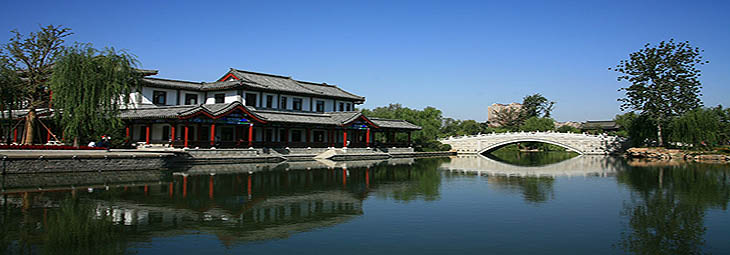| Submission | Jun. 10, 2016 (Extended to Oct. 7, 2016) |
| Conference | Oct. 27-28, 2016 |
| Notification | 20-40 days after the submission |
| Publication | 20-50 days after the final edition |

2016 World Congress on Energy, Environment and Sustainable Development, Jinan, China (WCEESD2016) will be held at Inzone Garland Hotel Jinan (济南银座佳悦酒店). Situated in the People's Shopping Mall Commercial Area, the Inzone Garland Hotel Jinan offers guests a convenient base for business and leisure travel in the Jinan area. Jinan Railway Station and bus station are 15 and 25 minutes' drive respectively. Jinan Yaoqiang Airport is 50 minutes away.
The following is the hotel negotiated rate for participants:
| Types | Negotiated Rate |
| Superior Twin Room | About 60 USD/Room/Night |
| Superior Room (Single Room) | About 60 USD/Room/Night |
Hotel reservation: 0086-18653181985 (0086-531-68618888)
Hotel address: No. 23377, Jingshi Road, Huaiyin District, Jinan, Shandong Province, China
You can also contact with the Organizing Committee to book rooms directly:
Cell Phone: 0086 - 18917219762; Email: huiyi123net_oct@126.com
To know more about the hotel, you can download the PDF by clicking the following link:
Inzone_Garland_Hotel_Jinan.pdf

Jinan is renowned across China for its numerous springs, the lakes fed by the spring water, and the weeping willows that grow along the water edge. The late-Qing author Liu E describes Jinan’s cityscape in his novel “The Travels of Lao Can” (老残游记, written 1903–04, published in 1907) as “Every family has spring water, every household has a willow tree”. Jinan was also the historical center of Buddhist culture for the whole province which is still manifested in the many historic sites that are left behind in its southern counties.
Here is the planned tourism route on Oct. 28, 2016 (from 8:00 to 17:00):
Daming Lake Park (大明湖) --- Baotu Spring Park (趵突泉) --- Thousand-Buddha Mountain (千佛山)
Daming Lake Park (大明湖)
Daming Lake Park (Figure 1) is famous for Daming Lake (also known as the Lake of Great Light) which is a natural lake formed from many springs. Characteristically unique is its constant water level, unaffected by heavy rains or drought. The six islands in Daming Lake contain flowers, trees and other plants flourishing amongst the various pavilions. The lake is a center of activity and one can find fish leaping near yachts and boats. In summer, lotuses bloom uninhibitedly filling half of the park with its fragrant scent. At the same time, willows circle the lake on three sides and swing with the breeze, a scene for which Daming Lake is famous. The centerpiece of the lake is a great man-made hectometer fountain built in 1985. The fountain has 103 injectors, and the main injector can spout water as high as 100 meters (about 328 feet) in all its majesty.

Figure 1: Daming Lake Park
Baotu Spring Park (趵突泉)
Baotu Spring (Figure 2) is located in the centre of Baotu Spring Park and is renowned as the best of the 72 springs in Jinan. Since ancient times, many famous poems and prose have been written relating to its unique beauty. The special geographical structure in Jinan creates the special Baotu Spring. Water pours out from the underground limestone cave throughout the night and day, sometimes reaching its maximum of 240,000 cubic meters per day. When water bursts out from the three outlets, the spring creates thunderous sounds and sprays water jets. Sometimes water columns are created that reach as high as 26.49 meters (about 86.9 feet), making a real spectacle. The spring retains its temperature at 18 degree Celsius (64.4 degree Fahrenheit) all year round. In cold winter, water mist rises and floats over the pool like clouds.

Figure 2: Baotu Spring
Thousand-Buddha Mountain (千佛山)
The Thousand-Buddha Mountain (Figure 3) (Qianfo Shan) is about 258 meters high (846 feet) ranging from east to west. It has been constructed into a park in1959 which occupies an area of about 166 hectare (140 acres). The mountain was called Mt. Li in ancient times. However, in the early days of Sui Dynasty (581-618) a great many statues of Buddha were chiseled on the rocks of the mountain and the Thousand-Buddha Temple was built and soon became famous, so the name of the temple was to become that of the mountain. There are many scenic spots and historical relics distributed in the mountain.

Figure 3: Thousand-Buddha Mountain